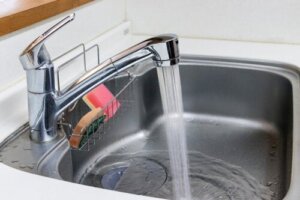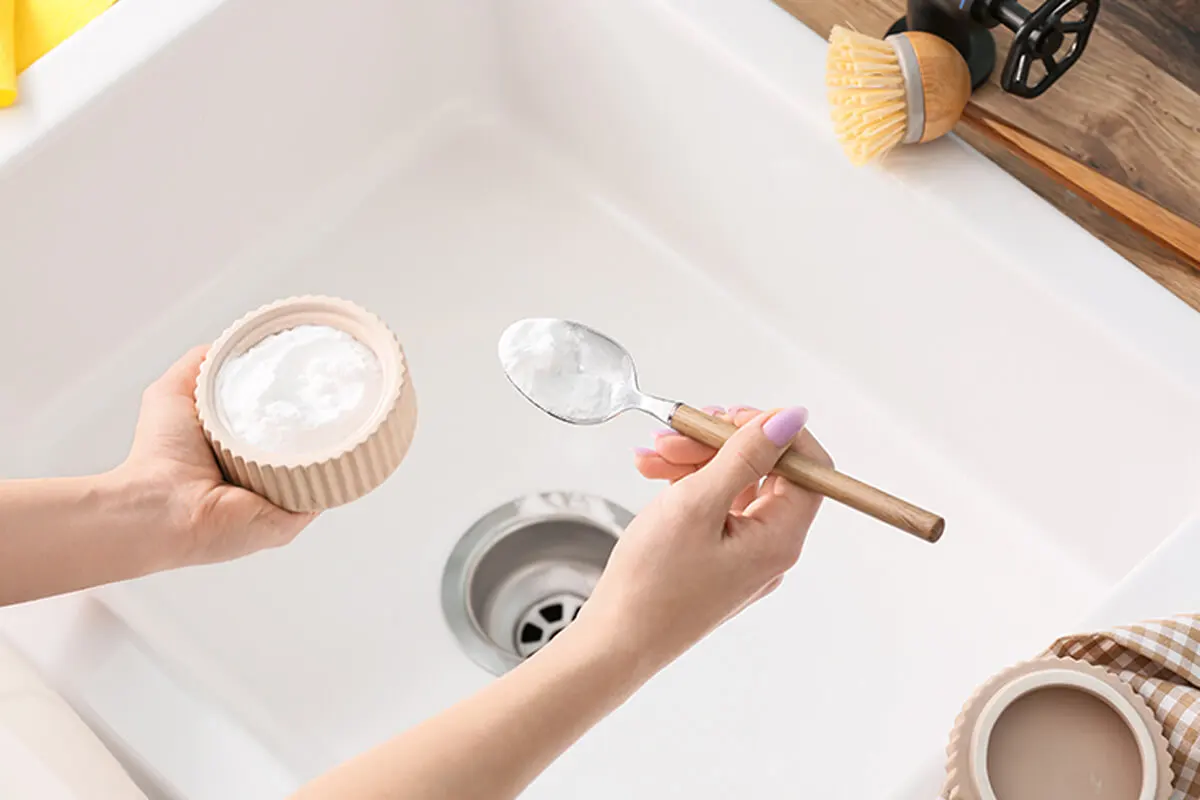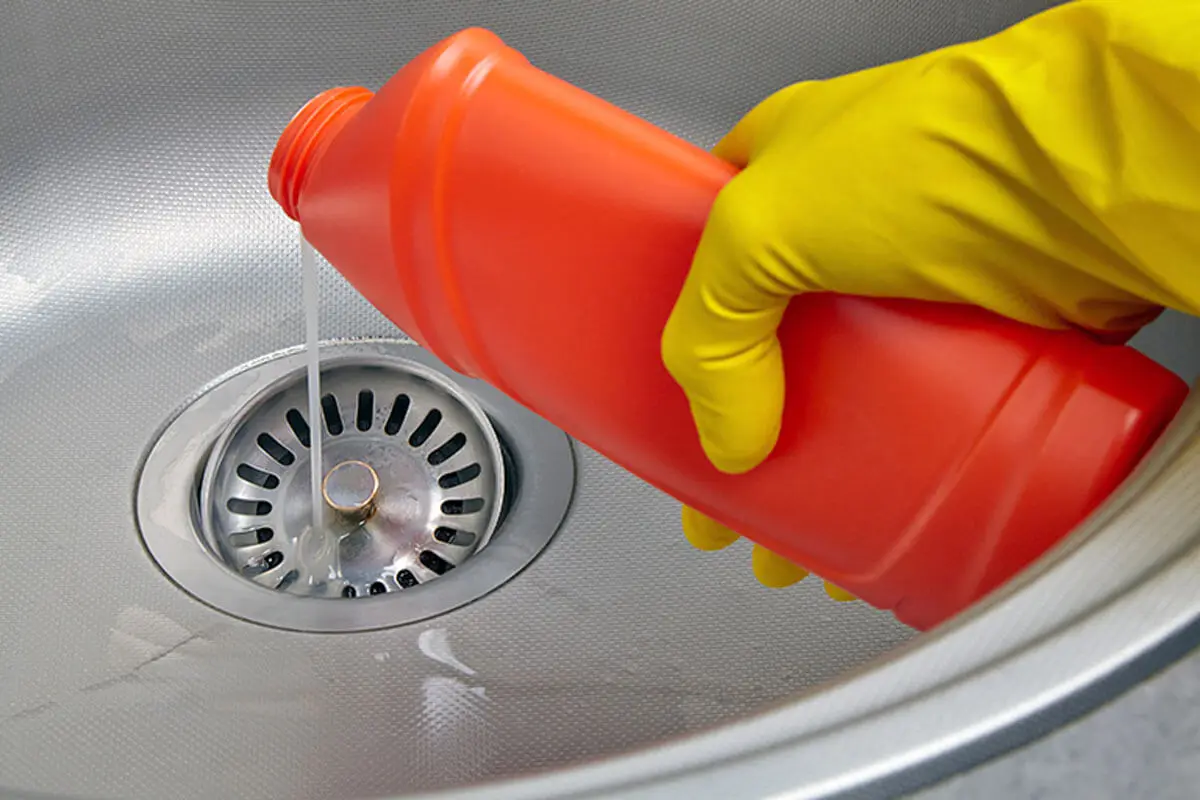How to Clean the Sink to Prevent Odors: From the Faucet to the Siphon

Today, we want to show you how to clean the sink effectively, from the faucet to the siphon. These are two fundamental parts that should always be clean to avoid bad odors.
The passage of time causes these accessories to accumulate lime, rust, and food debris.
This spoils their appearance, limits their proper functioning, and makes your kitchen dirty. Therefore, it’s a good idea that you know how to clean the sink in general, for which you can follow the tips we have here.
The best tip to clean the sink: Start with the faucets
To successfully clean your sink you have to start with the faucets. These accessories are used very often, so it’s normal that they start to get dirty and fill with lime, which comes from the treated water.
On the other hand, the constant humidity causes them to rust, losing shine and affecting their operation. Therefore, they must be given special treatment. Take note, because we’re going to tell you how to clean your faucets according to their condition.
We think you may be interested in reading this, too: 10 Tricks for Eliminating Bad Odors from the Kitchen
Clean and disinfect sink faucets
To clean sink faucets and disinfect them, you should use neutral soap and a soft cloth. These are the products with which you will clean the external part.
As for the disinfection of the internal parts of the faucets, you will have to remove the filter and the grid to immerse them in a mixture of one part vinegar to three parts water. After a few minutes, remove the parts and put them back in place. No need to rinse with water. In addition to disinfecting and cleaning, it will help you remove limescale.
Eliminate rust
Rust appears on sink faucets because of humidity and the passage of time. This effect greatly deteriorates their operation and affects the aesthetics of the kitchen.
Although these elements have a lifetime, after which they must be changed. However, before doing so you must make sure that it’s the right time. If it’s not, with a few simple tricks you can put an end to this problem:
- Acquire special chemical antioxidants to combat rust on these parts.
- Place a layer of salt on the surface of the faucet that is rusty and add lemon juice to it. Leave it on for several hours and use a soft brush to scrub. Finally, rinse with water.
- Make a paste with two tablespoons of baking soda and the juice of half a lemon. Rub with it the oxidized parts with a soft brush.
- Apply white vinegar, which disinfects and removes rust and limescale. However, this trick can damage your faucets if they are golden, so avoid it in that case.

Remove limescale from faucets
Limescale appears as a stain that dulls the shine of faucets and, in extreme cases, as a thick layer of a yellow or blackish color. It’s normal for this calcium carbonate compound to build up on this part, but you don’t have to leave it there.
As we mentioned, it’s responsible for decreasing the lifespan and encouraging malfunction. To get your sink clean, there are several ways you can go about it:
- Buy and use a chemical anti-scale, which has an immediate result, but contaminates the water.
- Cut and rub a lemon directly on the limescale stain, as many times as necessary, to remove it. To improve the result you can scrub the lemon juice with a scouring pad. However, do not use one if your faucets are golden in color.
- Mix vinegar with warm water and rub with a cloth, because it must be very dry so that it does not oxidize. Use a soft brush to scrub the joints, which are also affected by limescale.
- Create a paste of baking soda with warm water. Apply, let it act, and rinse with plenty of water.
- Rub the lime stains with toothpaste. Let it act and rinse with water. You will see how the lime disappears.
- Apply flour on the stains and rub them with a cloth. It may seem strange, but it works very well!
This is how you should clean stainless steel sink faucets
Because of their resistance, most people prefer to install sinks with stainless steel faucets. These require special treatment when disinfecting them. Although they are very good, they are no strangers to the damage caused by limescale and water stains, so they require constant cleaning.
You should clean this accessory with dish soap or white vinegar. The latter should always be diluted in warm water, as it is abrasive and in its pure state could cause more harm than good.
Say goodbye to bad sink odor: The siphon must be cleaned
Bad sink odor will not go away just by cleaning its surface and faucets. It is necessary to include the siphon in the routine.
In this pipe remains of food and chemical products should be discarded. When they decompose, they start to smell bad.
If you have this problem and it persists even when you have cleaned the kitchen in its integrity, apply some of the tricks that we will share with you below.

Mix baking soda, vinegar, and hot water
When it comes to effective and economical results, this sink trap cleaning trick takes the crown. Not only does it eliminate odor, but it also disinfects the inside of the drain.
Simply pour one cup of baking soda straight down the siphon with two cups of vinegar. You should let the mixture take effect and then pour the hot water (very carefully) into the hole.
The hotter it is, the more effective it will be.
Now, if you don’t have vinegar, you can replace it with the juice of a lemon. The reaction that takes place is known as redox and has an effect just as good as the one mentioned above.
Like this article? You may also like to read: 6 Ways to Get Rid of Deodorant Stains on Your Clothes
Be more aggressive and use bleach
If natural products aren’t your thing or the siphon is in too much trouble, then use a mixture of half a cup of bleach and half a cup of cold water. Pour it down the sink and let it sit for 20 minutes. At the end of this time, turn on the tap and let the water run, removing the dirt that was retained.
Now, to reduce the strong smell of bleach, you can finish the cleaning by adding lemon or orange juice, after cooking the fruit of your choice. This liquid should be poured hot to make the good smell last longer.
In addition to cleaning, you should take care of the sink trap on a daily basis
The last of the tips we will give you regarding cleaning the sink trap has to do with preventing bad odors. To achieve this, try not to throw any food down the drain.
In particular, you should be careful with oil, which is often flushed down the drain, but causes serious damage. It solidifies on contact with cold water, forming a layer that traps food debris and decomposes by itself. In addition, it affects water sources and aquatic species, once the waste reaches the environment.
The best thing to do is to collect the old oil in a plastic or glass container and put it in the recycling bin. Nowadays, there are also companies dedicated to its collection and transformation.
This text is provided for informational purposes only and does not replace consultation with a professional. If in doubt, consult your specialist.








